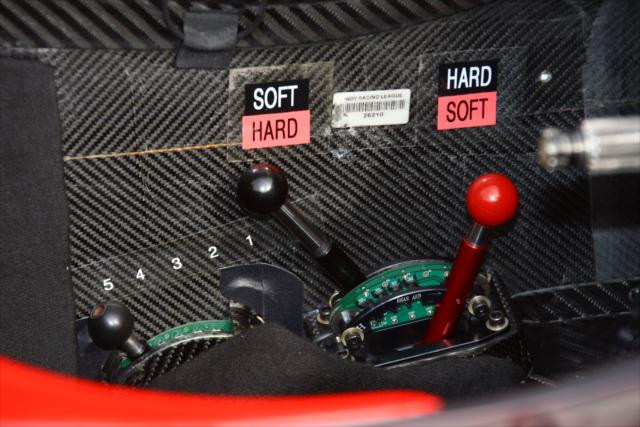Finding that ideal balance for a racing car is always tricky. Consideration must be made to both the aerodynamic and the mechanical components, the speed at which a problem is faced, the surface condition of the track, and the race strategy. As part of the Safe is Fast series, this piece details what aspects of the car affect handling at which speeds, and though somewhat simplistic, serves to illustrate how complex setup can be.
In order to determine how to approach a specific problem, the speed at which said problem is experienced needs to be addressed. For corners below sixty miles an hour, aerodynamics have little effect, and the changes must be made to the mechanical components, meaning the suspension and alignment. Changing the stiffness of the springs or the anti-roll bars will have a significant effect on the handing of the car at these speeds, and by softening or stiffening one end or the other, the car’s “balance” shifts forwards and backwards. These adjustments ought to be made slowly and specifically — Alain Prost, one of Formula One’s best at setting up a car, always made one change at a time, to best understand what effects he was making to a complicated suspension system.

Though racers of yesteryear could be competitive with this much oversteer, these days, it’s not efficient enough.
Adjusting springs can have a number of nasty side effects, and while their proper adjustment is paramount with having an ideal setup, it’s quicker and simpler to try and alleviate the issue with anti-roll bar adjustment. Sure, this can have a number of side effects, but there are fewer variables at stake here.
For corners taken in third and fourth gear, somewhere around 70-90 mph, the issue can be both mechanical and aerodynamic. Above those speeds, it’s strictly aerodynamic. Adjusting the aerodynamic balance is shifted much like the mechanical balance is moved fore and aft, although it’s the wings that are adjusted.

Modern race cars allow for anti-roll bar adjustment in-car, for when fuel loads diminish and the weight distribution changes.
Ultimately, finding that ideal balance is something very difficult to do, since a car that turns good lap times works differently in different situations. As Jay O’Connell notes, the best car oversteers in slow corners and understeers mildly in quick corners. This is because in the tighter, technical sections, a nimble, nervous rear end helps point the car in the right direction. Conversely, a stable setup is preferable in the quicker portions of the track, because oversteer at high speed is hard to control and extremely damaging to the tires. Understeer can be minimized with a simple lift of the throttle, and more importantly, understeer tends to go hand-in-hand with rear traction, and having the rear tires deliver their power to the ground early in a fast corner reaps huge benefits.
Though there are plenty of nuances to getting a car to handle properly, like fuel loads changing and driver preference, there are some basic rules which can help a car turn better lap times and get the most out of its tires. Skills and courage can help get around an ill-handling car on a case-by-case basis, but over the course of a season, a efficient race car is a much more effective tool — and finding that balance is an art in itself.





















